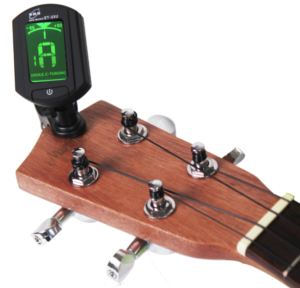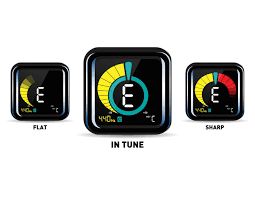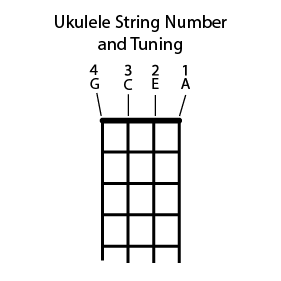This page may contain affiliate links – click here for more info
How to Tune a Ukulele
With all of today’s modern technology, learning how to tune a ukulele is easier than it’s ever been. Back in the day, in order to tune a ukulele we had to have a piano or other reference from which to get the proper note.
 Today there are online, iPhone, and Android apps that can be used to easily tune a ukulele. Additionally, there are inexpensive stand-alone electronic tuners that will help to tune your ukulele quickly and easily.
Today there are online, iPhone, and Android apps that can be used to easily tune a ukulele. Additionally, there are inexpensive stand-alone electronic tuners that will help to tune your ukulele quickly and easily.
Access 75 million songs from any device! FREE for 3 months! Cancel Anytime!
Although many of the iPhone and Android tuners are free and easy to use, some Ukulele players prefer to use electronic tuners, as they can be clamped to the headstock of the ukulele. This way the musician doesn’t have to bother with finding/unlocking their phone, etc. With time and some experimentation, you will find what works best for you.
Ukulele String Names
Ukulele stings are numbered from 1 to 4 from the bottom to the top, as referenced when correctly holding the ukulele.
The open strings for standard tuning of a ukulele are indicated in the diagram to the right.
The 1st string is tuned to the A note.
The 2nd string is tuned to the E note.
The 3rd string is tuned to the C note.
The 4th string is tuned to the G note.
When tuning each string, use the string’s tuning peg to tighten, or loosen the string. Tightening the string will cause the tone, or pitch, of the string to go higher. Loosening the string will decrease the tone. It usually takes very little movement to get the string in tune, so don’t over-do it.
Learn how to tune a ukulele and much more at the Ukulele Bootcamp!
How to Tune a Ukulele with a Tuner
Turn on the tuner or launch the tuner app on your phone.
Make sure there is no background noise that might confuse the tuner.
 Pluck the string you want to tune. The tuner or phone app will usually have some kind of indicator tell you whether to tighten or loosen the string.
Pluck the string you want to tune. The tuner or phone app will usually have some kind of indicator tell you whether to tighten or loosen the string.
The illustration to the left demonstrates what a typical electronic tuner will display when a note is played. The first screen shows the note being low – or flat. In this case, gently turn the tuning peg to tighten that string until the tuner shows the string being in tune, as in the middle picture.
When the tuner shows the note as being sharp, turn the tuning peg to loosen the string until the tuner shows it being in tune.
Repeat the process for each string.
There may be a time that the ukulele is so out of tune, that the tuner gets confused as to what note, or string, you are attempting to play. Verify you’re tuning the correct string to the correct note while tuning.
How to Tune a Ukulele without a Tuner
Modern technology is great and all – but sometimes it might be unavailable. Plus, it’s just good practice to learn how to tune a ukulele without a tuner.
If you have another instrument to use as a reference, you can play the corresponding note from that instrument to tune your ukulele. If another instrument is not available you can still tune your Ukulele, but you’ll have to use your ears!
Play the “C”, or 3rd string. If it sounds sharp or flat adjust the tuning peg until your comfortable with how it sounds.
Now play the fourth fret of the “C” string, this is E. E should sound the same as the open E string. Adjust the open string if it is not the same as the fretted note.
Repeat the second step with the third fret of the E string, or a G note. Make sure it matches with the open G string and adjust. Lastly, play the second fret on the G string, or an A note. This should sound the same as the open A string. Ensure this is in tune with the fretted note.
Learn MORE Than Just Chords!
Become a Ukulele Master!
Learning to play the ukulele involves much more than just knowing a list of chords. There are also strumming patterns, finger positions, holding the ukulele correctly, etc. Having someone show you how to play can be a game-changer. Having a knowledgeable mentor or instructor is the fastest way to improve your skills and boost your confidence. Self-taught musicians tend to form bad habits and techniques that prove difficult to break or can actually impede their growth as a musician.
“The Best Time to Plant a tree was 20 years ago, The 2nd best time to Plant a tree is TODAY!”
– Chinese Proverb



